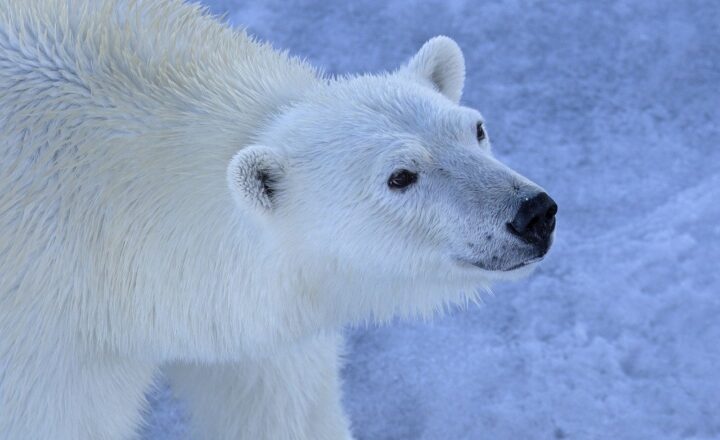The Impact of Wildlife Conservation on Global Ecosystems
November 17, 2024

Wildlife conservation is vital for maintaining the ecological balance of our planet. As human activity intensifies, the need for conservation becomes increasingly urgent. This article explores how wildlife conservation plays a crucial role in preserving biodiversity, maintaining ecosystem health, and supporting human livelihoods.
1. Understanding Wildlife Conservation
Wildlife conservation involves protecting species and their habitats to prevent extinction and preserve biodiversity. This can take many forms, including the establishment of protected areas, wildlife rehabilitation programs, and legal frameworks that prevent the illegal trade of endangered species. The aim is to sustain not only individual species but also the broader ecosystems they inhabit.
2. The Importance of Biodiversity
Biodiversity encompasses the variety of life on Earth, including species diversity, genetic diversity, and ecosystem diversity. It is essential for:
- Ecosystem Resilience: Diverse ecosystems are more resilient to changes and stresses, such as climate change and natural disasters. They can better recover from disturbances, which is vital for long-term sustainability.
- Pollination and Food Production: Many crops depend on animal pollinators. Healthy wildlife communities ensure plants can reproduce, which is crucial for global food security.
- Medicinal Resources: A significant portion of modern medicine is derived from wildlife and plants in natural habitats. Conserving these resources can lead to discoveries of new medicines.
As biodiversity diminishes due to habitat destruction, pollution, and climate change, the resultant ecological imbalance poses significant risks to human well-being.
3. The Role of Keystone Species
Certain species, known as keystone species, play a critical role in maintaining the structure of an ecosystem. A classic example is the sea otter, which preys on sea urchins. When otter populations decline, sea urchin numbers explode, leading to the destruction of kelp forests, which are essential habitats for many marine species. Conservation efforts focused on protecting keystone species can lead to significant positive shifts in ecosystems, promoting overall biodiversity and health.
4. Conservation Strategies and Success Stories
Multiple strategies are employed globally to combat biodiversity loss, including:
- Protected Areas: National parks and wildlife reserves play a critical role in conserving habitats. For example, Yellowstone National Park has preserved diverse ecosystems while supporting tourism and recreation.
- Community-Based Conservation: Engaging local communities in conservation efforts has proven effective. For instance, Namibia’s communal conservancies model successfully involving local tribes in wildlife management has led to increased wildlife populations and improved livelihoods.
- Habitat Restoration: Initiatives that restore degraded habitats, such as reforestation programs, not only benefit wildlife but also enhance ecosystem services such as carbon sequestration and soil erosion prevention.
These success stories demonstrate that with the right measures, we can reverse the trends of decline and pave the way for healthier ecosystems.
5. The Sociocultural Impact of Wildlife Conservation
Conservation efforts also contribute to cultural preservation and the enhancement of human well-being. Wildlife is often central to the cultural identities of indigenous communities. Protecting wildlife ensures the survival of traditional ecological knowledge and practices that have sustained these cultures for centuries.
Moreover, ecotourism driven by wildlife conservation initiatives can provide alternative livelihoods for local communities. By valuing wildlife as a resource for sustainable tourism, communities can benefit economically while preserving their natural heritage.
6. Challenges and the Way Forward
Despite the successes in wildlife conservation, numerous challenges remain. Global climate change, habitat loss, poaching, and human-wildlife conflict continue to threaten species and ecosystems.
To strengthen conservation efforts, it is crucial to:
- Encourage International Cooperation: Wildlife conservation is a global challenge that transcends borders; therefore, international treaties and cooperation are essential. The Convention on Biological Diversity (CBD) aims to secure a shared commitment to sustainable development and conservation practices worldwide.
- Raise Public Awareness: Education and outreach are vital in fostering a conservation ethic within communities. Informed citizens are more likely to participate in and support conservation efforts.
- Innovate in Conservation Strategies: Utilizing technology for monitoring wildlife populations, such as drone surveillance and genetic analysis, can enhance the effectiveness of conservation strategies and provide real-time data for decision-making.
One successful approach has been the establishment of wildlife corridors, which facilitate safe animal movement across fragmented habitats. This innovation not only supports biodiversity but also mitigates human-wildlife conflicts, showcasing how strategic conservation can benefit both nature and people.
Conclusion
Wildlife conservation is essential for maintaining healthy ecosystems that sustain life on Earth, including human life. As stewards of the planet, it is our responsibility to protect the diverse species and habitats that contribute to the ecological balance essential for all forms of life. By investing in wildlife conservation, we not only safeguard biodiversity but also promote ecological integrity, cultural preservation, and social well-being. Together, we can create a future where both wildlife and humans thrive in harmony.







